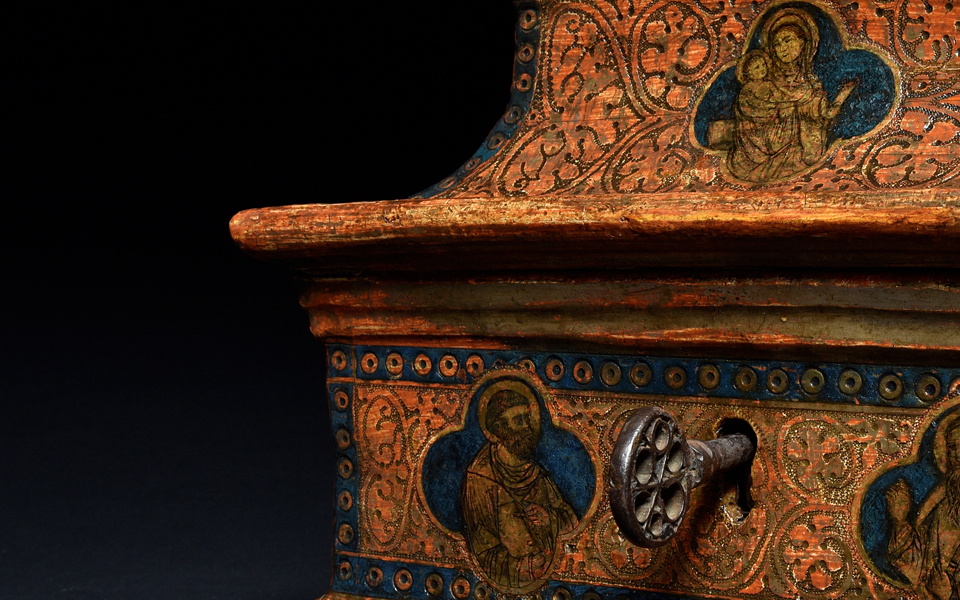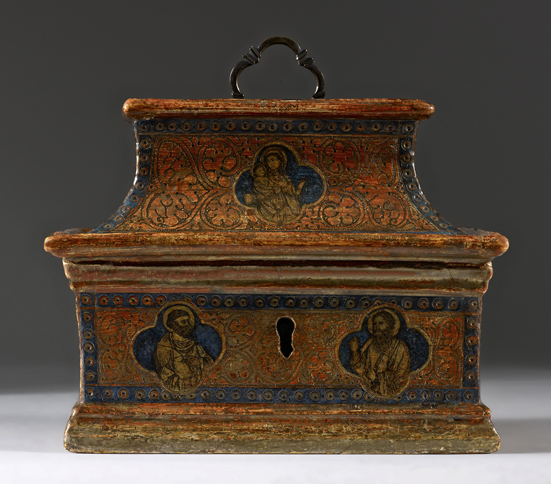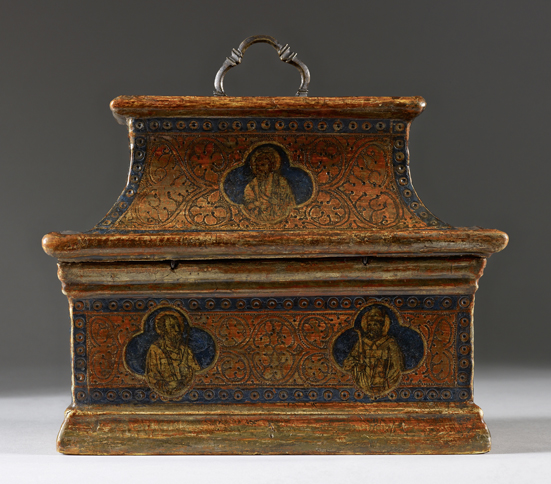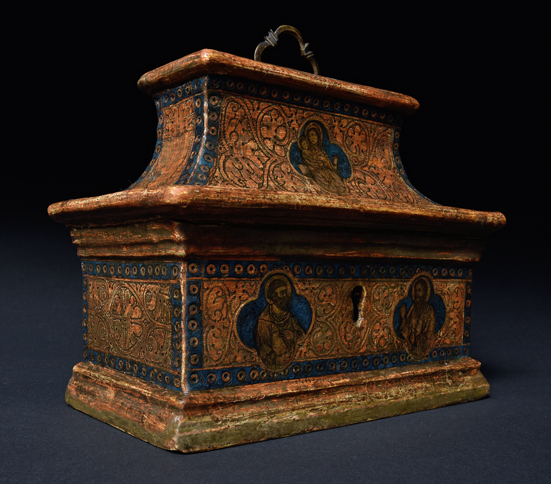
A Rare 14th century Sienese casket
This rare and precious little wooden box is a perfect embodiment of the medieval casket. The piece features a rectangular base with a moulded plinth, a parallelepiped body and a tapered lid with sloping edges and concave sides, slightly sticking out from the body upon which it rests.
The lid refers to a type of architectural casket, which German art historians since the 19th century have called ‘pagoda-shaped’ – because of the tall and slender lid – and which replicates in miniature the shape of Gothic sepulchral arks.
The casket shows a rich painted decoration: animated half-length busts of saints are enclosed within four-lobed medallions – three on the front and three on the back of the casket – whilst the short sides of the lid are adorned with two coats of arms no longer identifiable. Among the figures on the front we can make out the Madonna and Child in the middle of the lid and further down St Peter – on the left – and a saint with a thick beard and a book, perhaps St Andrew – on the right. On the top back, there is an Apostle with long beard who might correspond to St Bartholomew – probably connected to the person who commissioned the work – whilst beneath we can identify, from left to right, the figures of St Paul with a sword and a bishop saint with a crosier and a book.

The figures, which stand out against a light blue ground, were painted with varnish on gold, imitating the exquisite effects of gold-working techniques such as enamels, niellos or verres églomisés. The gilded surface of the casket is furthermore finely adorned with both punched decoration and freehand engravings.
The polymaterial taste shown by the decoration of the surfaces is highly reminiscent of the typical manner of the early 14th century Sienese workshops, such as that of the famous Lorenzetti brothers. Furthermore, the figures are rendered with a witty and amusing verve, a desire for characterization and a gravitas which are typical of followers of the Lorenzetti brothers.

As far as the medallions are concerned, some philological comparisons can be done with some works executed in the workshop of Lippo Vanni (documented between 1340 and 1375), a well-known painter and a leading illuminator in Siena: the graphic and draftsman style of some of his works on parchment, dating to between the fifth and seventh decades of the 14th century, are a significant example.
The casket is currently the oldest example belonging to the rare typology of ‘pagoda-shaped’ caskets: the sumptuous decoration, in imitation of gold and of the effects of gilded and incised glass objects, the so-called verres églomisés, much loved in 14th-century Tuscany and Umbria, and the iconography based on saints suggest that it was commissioned by an important member of the church to store his own small personal effects.
This wonderful work of art condenses many aspects of the fourteenth-century artistic civilization that, in a town like Siena, was able to combine a strenuous struggle for refinement with the use of the illusive potential of pictorial art.

Sienese artist from the circle of Lippo Vanni
CASKET
Painted, gilded and punched wood
Cm 24 x 14,5 x 19h
Siena
Circa 1340-50
Bibliography: Chiara Guerzi (preface by Andrea De Marchi), Painting and Goldworking in Conversation. A Rare Fourteenth Century Sienese Casket, 2019.
© 2013 – 2024 cesatiecesati.com | Please do not reproduce without our expressed written consent
Alessandro Cesati, Via San Giovanni sul Muro, 3 – 20121 Milano – P.IVA: IT06833070151